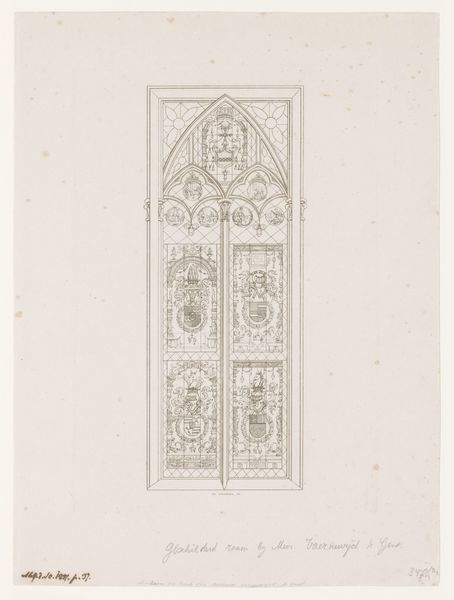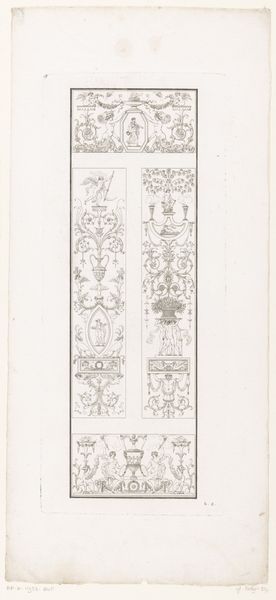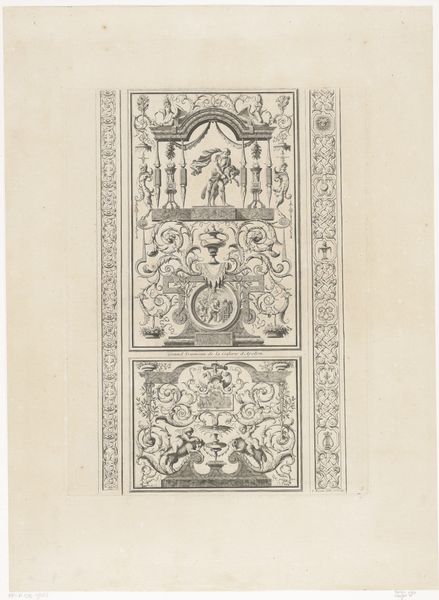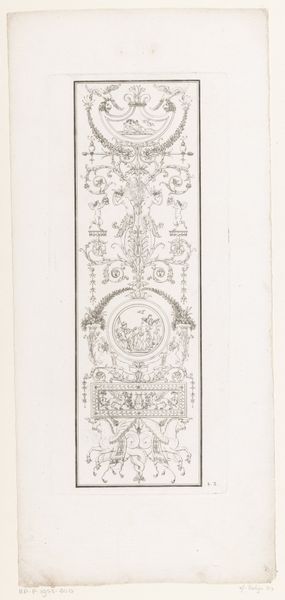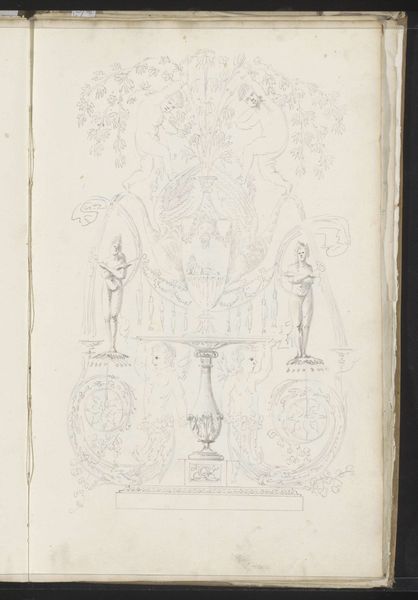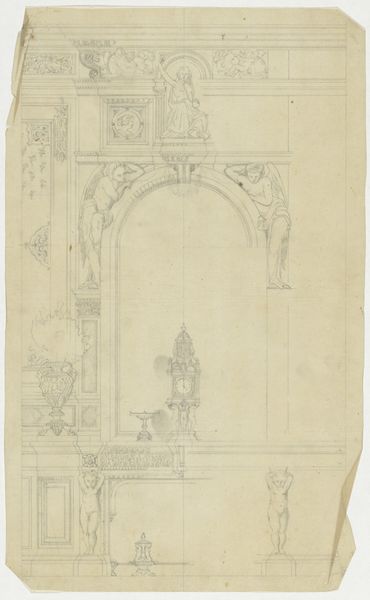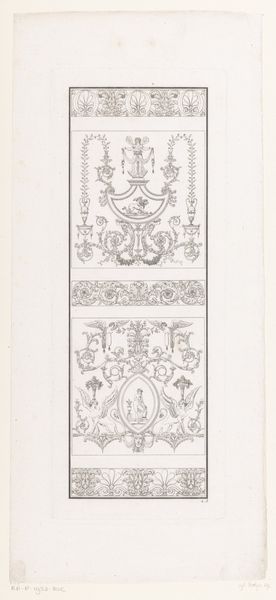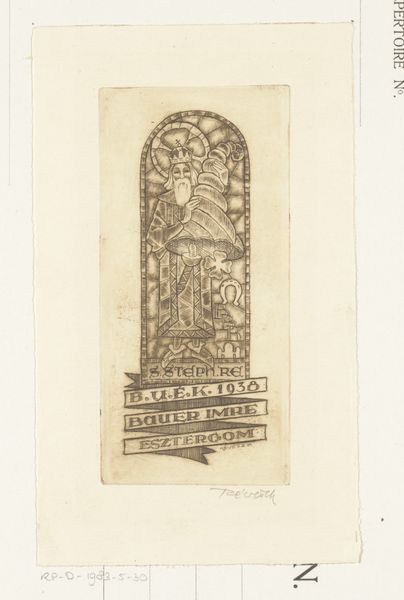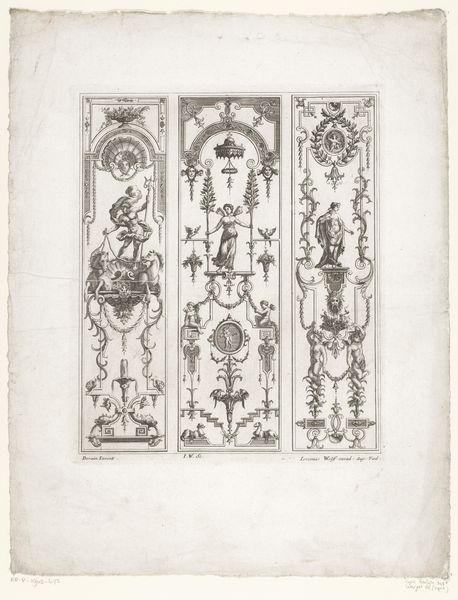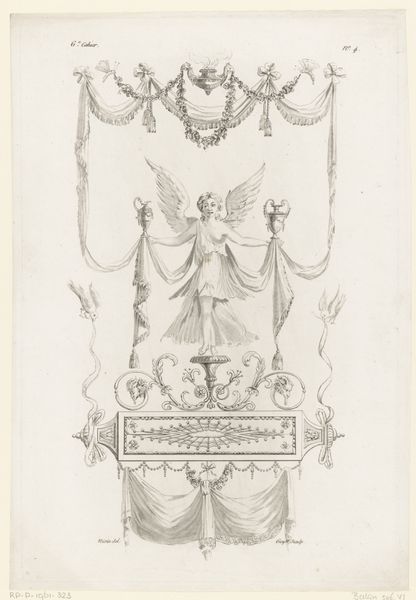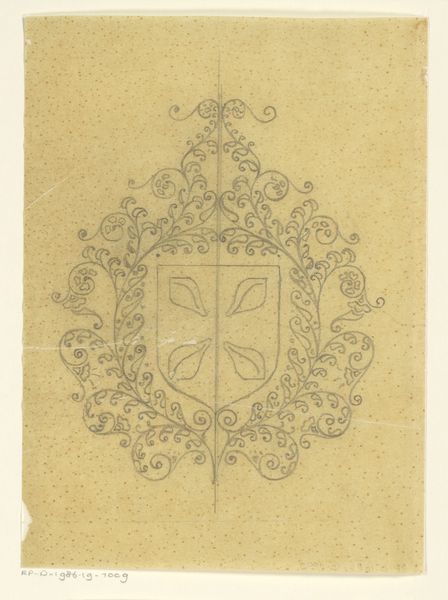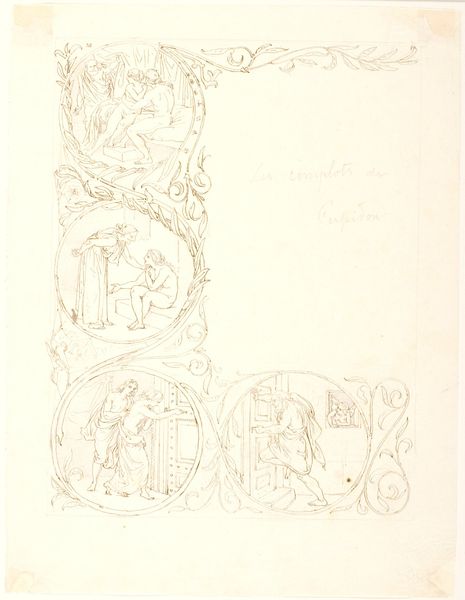
drawing, print, etching, paper, pencil
#
drawing
#
allegory
#
ink paper printed
# print
#
etching
#
figuration
#
paper
#
pen-ink sketch
#
pencil
#
symbolism
#
erotic-art
Dimensions: height 150 mm, width 104 mm
Copyright: Rijks Museum: Open Domain
Curator: The artwork before us, created by Felicien Rops in 1864, is entitled “Poppenkast gedecoreerd met erotisch mythologische scènes.” It's a print—an etching—on paper, currently held in the Rijksmuseum collection. Editor: My immediate impression is… bawdy. There's a raw, almost theatrical energy conveyed through the simple lines. You can almost hear the unruly crowd. It makes you think about what it's made from -- the materials used seem pretty straightforward. Curator: Indeed. The raw energy ties to symbolism Rops employs. This piece speaks of Eros and performance. Notice the inscription above the stage reads 'Erotikon Theatron.' What stories do you imagine are being performed in this theatre of the erotic? Editor: The social context has got me thinking; this was the 19th century. The printing process enabled this type of imagery to reach a wider audience. Did the masses really connect to these erotic mythical scènes, or was it just about its materiality? What's it actually for -- if you catch my drift? Curator: That friction, that tension between the overt display and perhaps a societal suppression, I believe, it is central to the work's message. It’s a window into the human psyche, isn’t it? How we negotiate desire, power, and societal expectation? There’s the devil in the detail and the myth-making, too. Look at the small cupid figures hiding there at the top for instance. Editor: The level of labor, the marks made on the etching plate to create it -- and the choices Rops had made to give us this composition, there’s this dark sense of humour and a rawness. Were prints just supposed to circulate highbrow circles, or were people buying and sticking them in their drawers?! Curator: It does offer many layers of interpretation; considering both its art historical context, its materiality, its purpose and of course, the weight of erotic and allegorical symbolism within it. Editor: This work definitely made me reflect on accessibility and how the industrial can really transform an artist's intended audience and the impact. Food for thought...
Comments
No comments
Be the first to comment and join the conversation on the ultimate creative platform.
